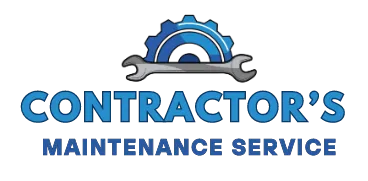Hose Safety: Ensuring Reliable Operations in Industrial Settings
- Barbara Wissler

- Aug 16
- 4 min read
Hose safety is a critical topic in any industrial environment where equipment reliability directly impacts productivity. At Contractor's Maintenance Service (CMS), we recognize the significant role hoses play in maintaining operational efficiency. Whether transporting fluids or gases, hoses are essential tools that, if not properly managed, can lead to hazardous situations. This blog post will delve into the importance of hose safety, common hazards, best practices for inspection and maintenance, signs of hose wear, storage methods, and the value of professional servicing. Our aim is to equip industrial equipment users, facility managers, and maintenance professionals with the knowledge needed to enhance safety and performance in their operations.
Understanding Common Hose Hazards
Hoses, when used improperly or maintained inadequately, can pose various hazards. Understanding these risks is the first step to ensuring safety. Some common hazards associated with hoses include:
Bursting and Leaking: Hoses can become weak over time due to pressure, temperature changes, or physical damage, resulting in leaks or bursts.
Chemical Exposure: Certain hoses can degrade when exposed to specific chemicals, leading to leaks or even hose collapse. It's vital to ensure that the hose material is compatible with the substances it conveys.
Trip Hazards: Improperly stored hoses can create trip hazards in industrial settings, potentially leading to accidents and injuries.
Environmental Conditions: Extreme temperatures, UV light, and weather elements can also affect the integrity of hoses.
Awareness of these hazards allows teams to implement proactive measures that ensure a safer work environment.

Best Practices for Inspection and Maintenance
Regular inspection and maintenance of hoses are essential for preventing accidents and guaranteeing system reliability. Here are some best practices to integrate into your maintenance schedule:
Develop a Routine Inspection Schedule: Establish a timeline for inspecting hoses based on usage frequency. Hoses in high-pressure applications should be checked more frequently.
Visual Inspections: Conduct thorough visual inspections for signs of wear, such as fraying, cracking, or any discoloration. Any irregularities should be noted immediately.
Pressure Testing: Regularly test hoses under working pressure to ensure they can handle operational demands. This practice helps identify weaknesses that may not be visible externally.
Documentation: Keep a detailed log of inspections, repairs, and replacements. This documentation serves as a reference for improving maintenance protocols in the future.
Training: Ensure that all team members are trained to recognize common hose issues. Implement regular training sessions to keep safety protocols fresh and top of mind.
Implementing these best practices will not only extend the life of your hoses but significantly reduce the risk of accidents.

Recognizing Signs of Hose Wear
Identifying the signs of hose wear early can lead to timely interventions and prevent accidents. Some common indicators include:
Cracks and Cuts: Inspect hoses for any visible signs of cracks or cuts. These may be small but can lead to major leaks.
Bulging or Swelling: If a hose appears bulging, it may indicate internal damage or excessive pressure.
Discoloration: Hoses that change color may be experiencing degradation. Check that the hose material remains compatible with the conveyed substances.
Regularly monitor hoses and undertake immediate action when any of these signs are present. Ignoring these indicators can lead to catastrophic failures, resulting in costly downtime and potential safety hazards.
Proper Storage Techniques
How hoses are stored can greatly impact their longevity and safety. Adopting the following storage techniques can help maintain hose integrity:
Coiling: Always coil hoses properly to avoid kinks that could hamper functionality. Use storage reels if available.
Environment: Store hoses in a clean, dry, and cool environment, away from any harsh chemicals or direct sunlight that could degrade the material.
Elevated Storage: Keep hoses off the ground to prevent moisture accumulation, which can lead to mold or deterioration.
Labeling: Ensure that all hoses are clearly labeled with their purpose, pressure rating, and material compatibility. This labeling helps in easy identification and reduces misuse.
By adhering to these storage guidelines, you can enhance the life of your hoses and ensure a safer working environment.

The Value of Professional Servicing
While performing internal inspections and maintenance is crucial, sometimes expert attention is necessary. Engaging professionals for hose servicing can lead to numerous benefits:
Expert Evaluation: Professionals have the tools and knowledge to evaluate hoses thoroughly. They can provide insight into issues that may not be visible to the untrained eye.
Improved Safety: Professional servicing minimizes risks by ensuring that hoses meet safety regulations and industry standards.
Enhanced Performance: Regular professional maintenance guarantees that hoses will operate efficiently, ultimately leading to enhanced productivity.
Extended Lifespan: A professional service can identify potential issues early, thus prolonging the longevity of your hoses.
CMS is committed to maintaining reliability, safety, and customer support by offering top-notch professional services. We have a team of experienced technicians eager to help you.
In summary, hose safety is a critical aspect of industrial operations, and neglecting it can lead to severe consequences. By understanding common hazards, conducting regular maintenance, recognizing signs of wear, storing hoses properly, and seeking professional servicing, you will create a safer work environment. CMS prides itself on being a partner in your experience; we are here to help enhance equipment safety and longevity. For more information on how we can support your operations, visit our website for detailed service offerings and insights on maintenance practices.
























Comments